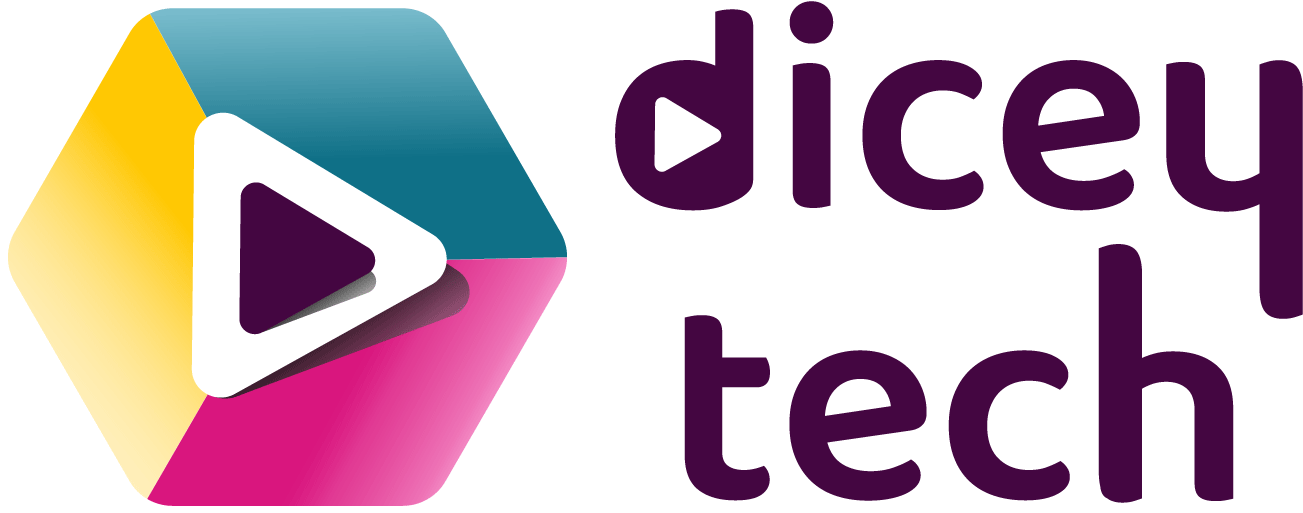
What is the Role of Education in the Age of Automation?
Alex Alexandrescu | 12 Jan 2020
Whether we like it or not, technology is being sewn into the fabric of our lives. This creates both risks and opportunities. I believe that the key to navigate between a dystopian and utopian future is education. Only an educated and digitally literate society will be able to harness and use technology, rather than be used by it. This means that education needs to evolve. Can you imagine if everyone on the planet, regardless of occupation or interests, would have the skills of an average hardware engineer and software engineer? What would the world look like if everyone would be able to apply this digital literacy to their field?
I co-founded Dicey Tech to make this idea a reality. And the first step is to focus on youth. Through fun and engaging learning experiences that develop both technical and enterprise (i.e. soft) skills, we are inspiring young students to learn and explore career pathways by solving problems and making things that they are curious about.
This article describes the historical dynamic between industry and education, the challenges sparked by an increasingly tech-driven world, and potential solutions to strengthen the link between the two.
Industry is Evolving – Education isn’t.
Technological advancement has been controversial ever since the industrial revolution of the 18th century. As an immense driver of economic growth, technology is increasingly permeating the fabric of society by shaping everything from how we communicate, work, learn, and behave.
But the way technology evolves, particularly in terms of automation, is driven by goals which are not necessarily related to the interests and needs of the people it affects. These goals largely focus on increasing productivity directly or indirectly by optimising work processes – hence eliminating sets of jobs, creating new ones, and changing the work environment. Historically, this resulted in improved productivity, better earnings, and sustained economic growth.
This complex issue is often oversimplified in public discourse by emphasising the substitution of human workforce with machines. Instead, a more productive discussion would focus on the specific roles that machines can play, freeing us up to address challenges and ambiguities that we are best designed to address – through creativity, adaptability, social skills, common sense, and a combination of formalised and intuitive thinking.
The changing nature of skills.
Paradoxically, people can’t find jobs and businesses can’t find talent ([1], [2], [3], [4]). How could that be?
There is a mismatch between the demand and supply of skills. Industry is aggressively advancing, while education is systemically stagnating in terms of equipping learners with relevant skills, knowledge, understanding of different career pathways, and the motivation to use their abilities to take on the world.
According to a PwC report, 79% of UK CEOs suggest that the number one business threat in the next 12 months is the availability of skills. And that’s only 12 months! As new jobs with new skillsets are being created more frequently, it is difficult to imagine how many businesses will survive over the next 10 years if we preserve the status quo. The social and economic implications would be catastrophic.
How did we get here?
Education has had two goals over the last 300 years. The first is to create the curious, knowledgeable citizen, and the second is to create the skilled labour market participant.
To do so, education uses content to teach specific skills, provides the setting where norms of the work environment can be absorbed, and applies formal or informal grading systems that indicate which individuals are likely to be the best at specific jobs.
Education, as an institution, was born as a direct consequence of industry needs. As technology advanced, from the time of the steam engine and first textile mills, the way we organised work evolved. The Industrial Revolution moved production from people’s homes and into factories, where processes were standardised and benchmarked. The demand for standardised skills therefore exploded and institutional education was born to supply that demand.
In the early 1900s, the first mass-manufactured, affordable car was born – the Ford Model T. Henry Ford and Frederick Taylor designed the assembly line by adding machines to mechanise processes and to minimise and standardise movement of workers – in order to maximise efficiency and output. Although a necessity at that time, this system skewed the focus of education away from purposeful, curiosity-driven learning and more towards a training system that equips students to fulfil standardised jobs.
A century later, industries are now transitioning from closed-systems with scarce, siloed information to open-systems with information and processing abundance.
In an age of information abundance, how should education evolve?
In their book, “How Google Works”, Eric Schmidt and Jonathan Rosenberg argue that the focus of businesses should be to create an environment that nurtures and enables smart creatives with technical knowledge, business savviness and a hands-on approach. Consequently, their hiring decisions place higher emphasis on candidates’ abilities to learn and adapt, rather than their specialised knowledge alone.
Increasingly, if people want to ensure they don’t get left out and have prosperous careers, they need the ability to quickly find, process, understand, and apply new information to create and solve problems.
At Dicey Tech, we believe that institutional education should evolve into a medium that inspires and enables all learners to build relevant knowledge and skills, explore their interests, and apply them with a purpose. To thrive in the future of work, students should be encouraged to understand how to analyse problems, ask questions, and acquire the knowledge and tools required to solve them. Among other benefits, this would enable the development of creativity, critical thinking, and resilience – abilities which are not only attractive for employers, but also create the foundation for capable and prolific individuals. Recent efforts surrounding STEAM education are a significant step forward.
4 steps to create effective change.
To achieve this transformation in education, there are four fundamental opportunity areas we are addressing through our work at Dicey Tech:
- Teaching methods
- Tools and infrastructure
- Educational content
- Student mindset / metacognition
The challenges involve debunking industry misconceptions and fixed mindsets, exploring effective teaching methods that engage and empower students, and finding convergence between what students are curious about and what is relevant for industries.
In terms of methods, studies show that students respond significantly better and learn more effectively through active, constructive, and interactive teaching methods. These involve participation, experimentation, collaboration, and learning by making – as opposed to simply relying on the traditional passive methods of rote memorisation and regurgitation of facts. Project-based learning is a great example. It’s one thing to memorise trigonometric formulas and ‘go through the motion’. But it’s completely different to be tasked with controlling a robotic arm to pick up an object. That extra step of breaking the problem down into components and realising you need trigonometric formulas to calculate positions creates a real, tangible goal. This goal adds an extra layer of context and motivation for students to really understand the underlying theory and get a sense for where it is useful.

Consequently, 3D printers together with open-source electronics create a groundbreaking, enabling infrastructure. They are cost-effective compared with most ready-made, closed-source robot kits and offer the freedom to create and combine any physical shape with any digital functionality. Instead of spending £2,700 on a ‘educational’ robot with limited learning value, teachers can now use the same budget to buy an average 3D printer (<£1000) and enough electronics (Raspberry Pi’s, MicroBits, Arduinos, motors, sensors, etc) and materials to keep a whole class busy for a few years – learning about rockets, drones, cars, trains, smart objects, prosthetics, modern art, environmental monitoring, and many more. This opens up a new era of learning through experimentation and problem-solving, where imagination is the limit to what is possible.
In terms of content, we design projects and curricula that challenge students to work individually or in teams to address real industry problems, which are mapped to national specifications. Consequently, students develop not only core technical skills like design, programming, and subject knowledge, but also soft skills by working in teams, managing progress, and persevering. We also take the learning experience one step further – by linking these problems with specific careers. This contextualises learning and gives students an indication of how their curiosity and interests unlock different career pathways.
Finally, in terms of mindset, we focus on fostering a growth mentality and dispelling negative assumptions students might have about their own potential. Physical projects involving design necessarily imply an iterative process. We use this to encourages students to take a pragmatic approach to plan the work, identify and question assumptions, persevere, and understand that failure is a natural step towards success.
Looking ahead.
We’re in the midst of exciting times. We have the opportunity to converge the purpose of institutional education with the actual purpose of learning – to spark creativity, critical thinking, reflection, and understanding of both the technical and social aspects of the world around. Our ability to build technology that takes over the menial work enables us to focus on what is stimulating and intrinsically rewarding – exploring and expanding our human potential.
But to materialise this opportunity and avoid falling into the skills gap, education must evolve. It is no longer about teaching students how to conform to the world as is – it’s about empowering learners to change the world for the better.
If this ethos resonates with you, please get in touch -> a.alex@diceytech.co.uk.
But regardless of your position, if you have any feedback about this post, I would love to hear it.
Thanks for reading! Until next time.
Alex
